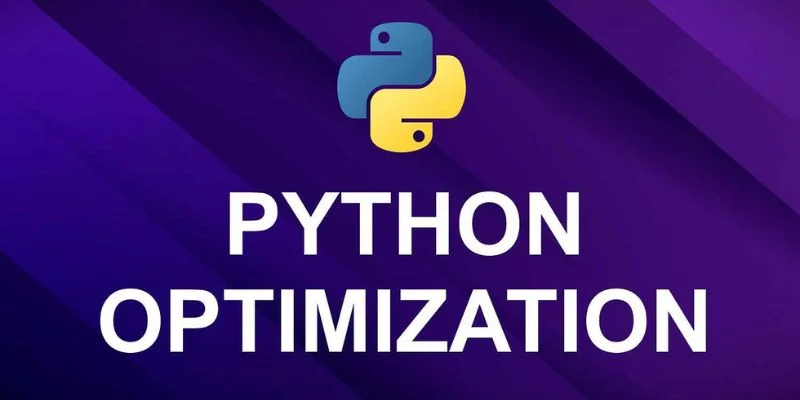
While user-friendly and rich in features, Python is only sometimes the fastest language. Many developers need help with performance bottlenecks when their applications scale up. Optimizing your code can make a significant difference, whether handling big data, performing complex calculations, or writing backend services. Even minor improvements in code structure and logic can yield substantial performance gains. If you’re enrolled in Python Training in Coimbatore, understanding how to optimize Python is critical for ensuring applications run at peak efficiency. Let’s explore effective strategies for optimizing Python code and improving its performance.
1. Use Built-In Functions and Libraries
Python’s built-in functions and standard libraries are optimized for performance and are written in C, making them much faster than manually writing equivalent functions in pure Python. Functions like sum(), len(), min(), and max() are highly optimized and should be used whenever possible. Additionally, libraries like NumPy and Pandas offer fast operations for handling large datasets and performing numerical computations.
For example, the built-in sum() function will be significantly faster and more efficient instead of manually looping through a list to calculate the sum. Similarly, leveraging libraries designed for performance can save you from reinventing the wheel and provide better optimization.
2. Minimize the Use of Global Variables
Global variables can slow down your Python code because accessing global variables is more expensive than local ones. This is due to Python’s internal mechanics that require searching through global namespaces. To improve performance, try to limit the use of global variables and instead pass variables as function arguments or define them within the local scope of functions. By keeping your variables local, Python can access them faster, resulting in better performance. This simple adjustment, detailed in many Python Course in Madurai curriculums, can make your code run more efficiently, especially when working with large data sets or repetitive operations.
3. Use List Comprehensions Instead of Loops
Loops are often slower in Python compared to other programming languages. One way to optimize your loops is by using list comprehensions, which are more efficient and concise. List comprehensions allow you to perform operations on lists in a single line of code, which Python can process more quickly than traditional for-loops.
For instance, a list comprehension can replace a for-loop when creating or modifying lists. This reduces the amount of code and speeds up execution, particularly when dealing with large data sets.
4. Profile Your Code
Before you start optimizing, it’s important to understand where the bottlenecks in your code are. Profiling tools like cProfile or line_profiler can help you identify which parts of your code consume the most time and resources. Once you know where the problem areas are, you can focus your optimization efforts more effectively.
Profiling helps avoid premature optimization, where developers may optimize parts of the code that don’t significantly affect performance. In a Python Course in Pondicherry, students are often introduced to these profiling tools to help them improve code efficiency in larger applications.
5. Use Generators Instead of Lists
Generators are a great way to save memory and improve performance when dealing with large datasets or data streams. Unlike lists, which store all elements in memory, generators yield items one at a time, only when requested. This lazy evaluation method reduces the memory overhead and speeds up execution in many cases.
Using generators is particularly useful when working with very large data sequences that don’t need to be stored all at once. It allows your program to run faster and more efficiently, especially in data-heavy operations.
6. Avoid Unnecessary Object Creation
Creating new objects, especially in a loop, can be a performance killer in Python. Each time an object is created, Python has to allocate memory, which takes time and slows down your code. Instead, reuse existing objects whenever possible or use more efficient data structures like tuples instead of lists when you don’t need to modify the data.
By reducing unnecessary object creation, you can minimize the overhead associated with memory allocation and free up resources for other tasks. This small change can lead to noticeable performance improvements, particularly in large-scale applications.
7. Leverage Multithreading and Multiprocessing
If your Python application is CPU-bound, you can use multithreading and multiprocessing to optimize performance. Python’s Global Interpreter Lock (GIL) can limit the effectiveness of multithreading, but threading can still provide a speed boost for tasks that are I/O-bound, such as file reading or network requests. Using the multiprocessing module to run parallel processes for CPU-bound tasks can help you utilize multiple CPU cores.
By dividing your tasks into multiple threads or processes, you can improve the overall efficiency of your code and reduce the time it takes to complete resource-intensive operations.
Optimizing Python code for better performance is essential for any developer aiming to build efficient and scalable applications. From using built-in functions and libraries to minimizing global variables and employing list comprehensions, there are numerous techniques you can apply to enhance the speed of your code. Profiling your code to identify bottlenecks, using generators, and leveraging multithreading and multiprocessing are other powerful strategies to ensure your Python applications perform at their best.
If you’re taking Python Training in Tirupur, mastering these optimization strategies will significantly reduce execution time and resource consumption, allowing your applications to run faster and more efficiently in real-world scenarios.
